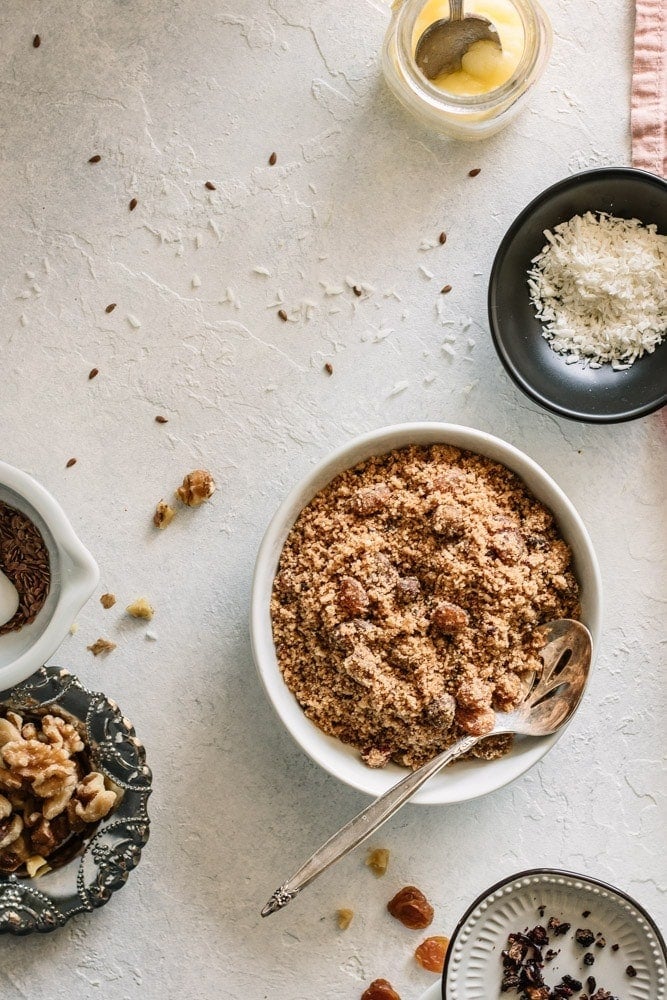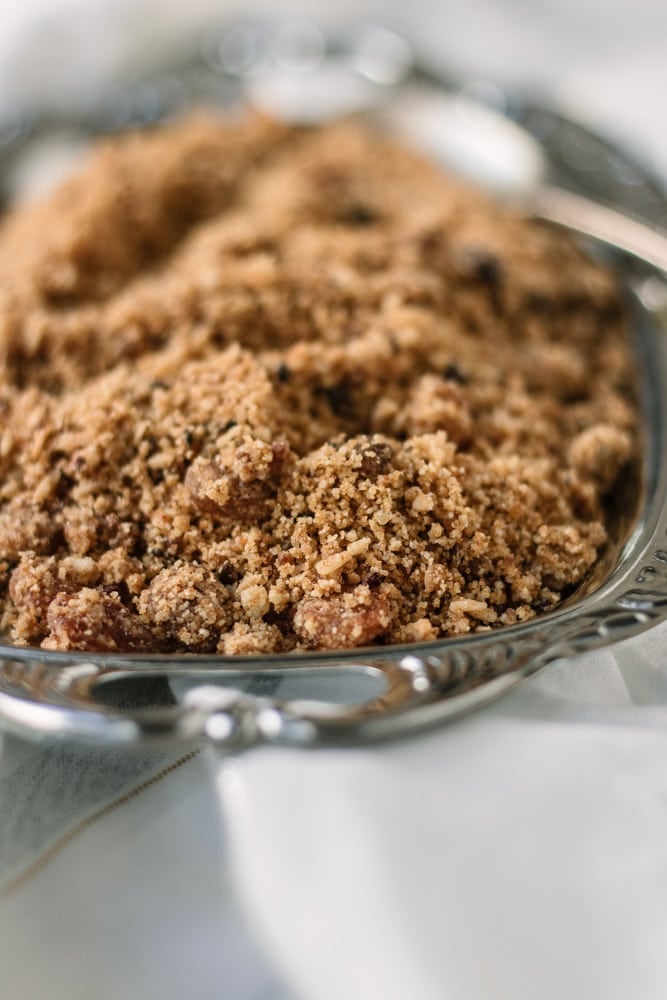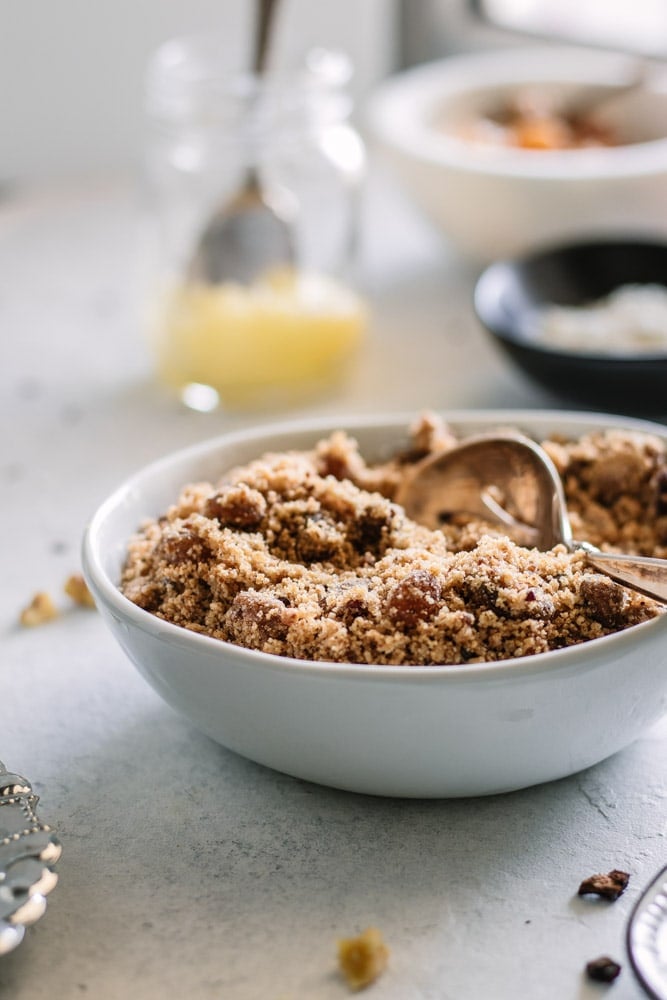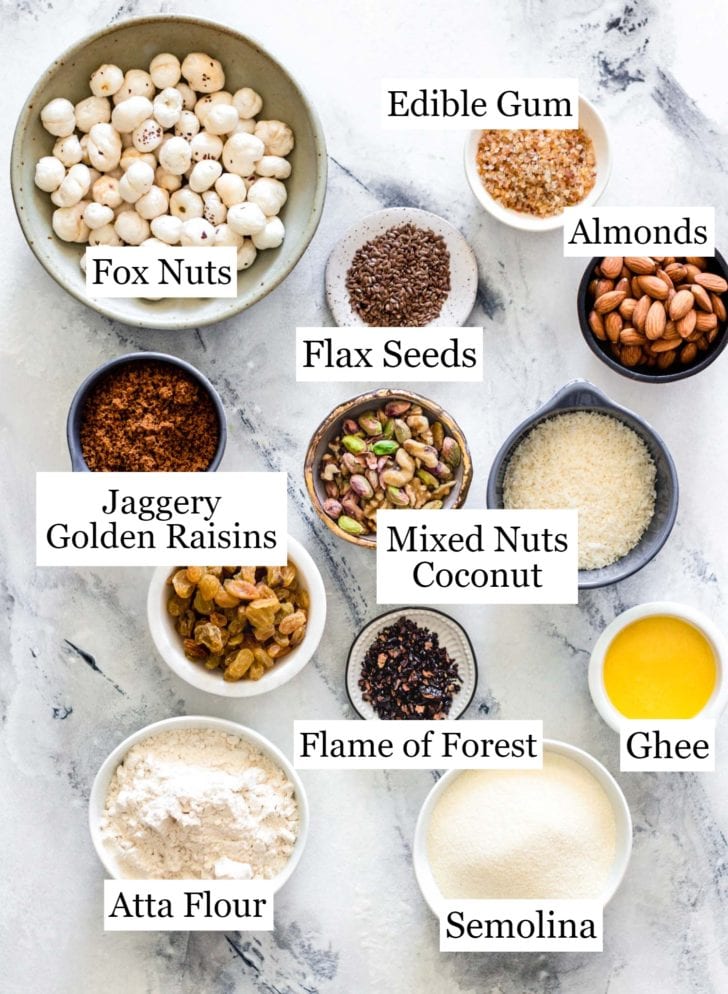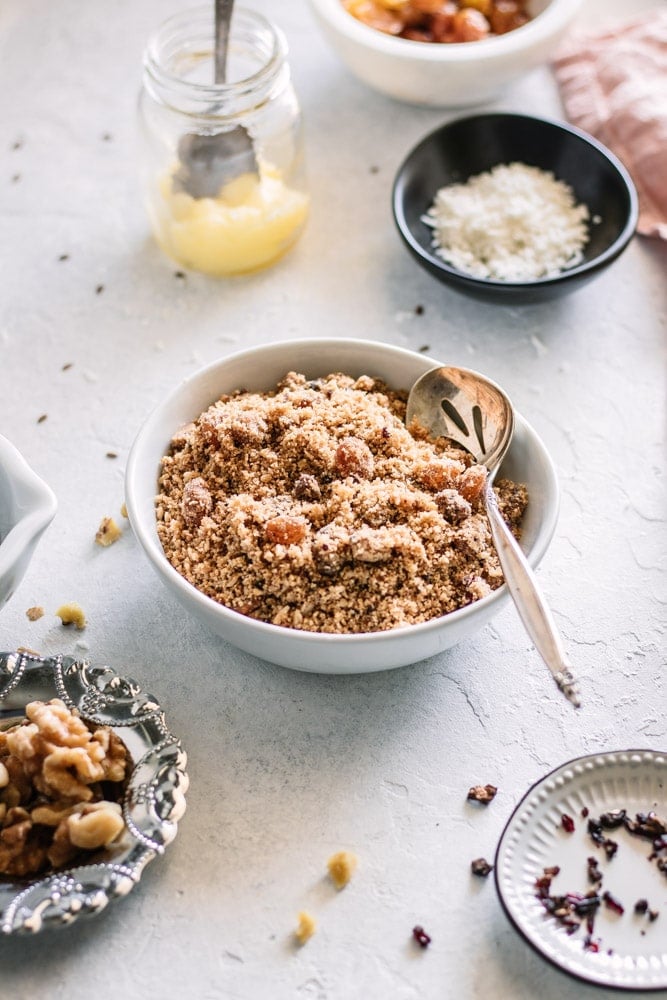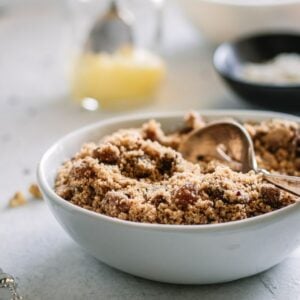What is Panjeeri?
Panjeeri (or Panjiri) is a tasty Pakistani/Indian postpartum healing and lactation food that is perfect for providing nourishment and energy to new moms. Since panjeeri is considered a ‘hot’ or warming food, it’s also eaten during winter to replenish and strengthen the body. Enter your email below and get it sent straight to your inbox. Plus, get recipes & tips every week! Though panjeeri recipes vary based on region and family, this is a long-standing, traditional version made with a base of ghee, whole wheat atta flour, semolina (sooji), dried fruit, nuts, and seeds.
Panjeeri – A Traditional Healing Food
If you’ve been following this blog, you know I truly believe in traditional South Asian food wisdom. Our ancestors may not have studied the compounds of food in laboratories, but they observed the effects it had on their bodies. Using that wisdom, they made food that was healing, nourishing, and appropriate for individual needs and requirements. Panjeeri is similar to muesli or granola, except next-level healthy (proudly biased opinion), making it a nutritious snack. It’s a mashup of whole-wheat flour (atta), fine semolina, nuts, seeds, and herbs. You basically roast the entire South Asian/superfood section of your pantry in ghee, mix it all up, and you’ve got panjeeri!
Panjeeri Ingredients
Sourcing the ingredients for making Panjeeri may seem harder than making the Panjeeri itself. You can find edible gum (goond), flame of the forest (kamarkas), fox nuts (phool makhana), and powdered jaggery (gur) in many South Asian grocery stores (try calling before making the trip) or online, but feel free to omit the ingredients you can’t find. Here they are: Clockwise From left:
Fox Nuts (Phool Makhana) – Also called puffed lotus, these are lightweight, popcorn-like puffs. Raw phool makhana will not not break if you bite into it. When cooked, it’ll be crispy and break apart easily once you bite into it. Note that these absorb a lot of oil, so you don’t need to add more unless you want to. These take the longest to roast. Flax Seeds – Available in most grocery stores. Feel free to substitute with flax meal if that’s what you have on hand. I’ve used 1 tbsp here but you can use more if you’d like. Edible Gum (Goond) – This is an edible gum (often called gum arabic) derived from a tree sap and is said to be warming and strengthening for the body. As the gum crystals cook, they’ll pop and swell to about double the size. Do not use whole form crystals (Goond Katira) which are large crystals (very difficult to pulverize!). Nuts – I use raw almonds and walnuts or any other nuts I have in my pantry such as pistachios or cashews. Coconut – You can use any type of coconut flakes. Note that the consistency of the coconut will affect cook time. Ghee – Ghee is vital in Panjeeri. Be generous with it. It’s what makes the Panjeeri easy to eat and digest. Too little ghee makes panjeeri a bit dry and hard to down. Semolina (Sooji) – For better texture, choose fine semolina instead of coarse. If you can’t find it, coarse semolina will do just fine. Atta Flour – Instead of dry-roasting, I’ve tried roasting the atta in 4 tbsp ghee for the same amount of time. I found it makes for a heavier, ghee-laden panjeeri. Adding the atta dry adds balance. You can also substitute more semolina in place of atta. Golden Raisins – These add sweetness and texture to the panjeeri. If you add more, you may eed less sugar. Jaggery Powder (Gud) – Use jaggery powder, brown sugar, raw cane sugar, or a blend of sugars. Flame of forest (Kamarkas) – Literally translated to ‘tighten waist’, this is said to be especially beneficial to new moms. I’ve started with modest amount because I’m not a fan of the texture, but feel free to use more.
Tips for Making Panjeeri
Tips for Eating & Storing Panjeeri
Eat panjeeri in moderation. A tablespoon here, a small bowl there. It’s caloric (in the best way), nutrient-dense, and filling, so a little goes a long way. Keep it on your bedside and snack on it whenever the mood strikes, which will be often because it’s so tasty! This is not a doctor’s note but I believe since Panjeeri is a ‘warming’ food and is said to clear out the uterus, it should not be eaten in large quantities if you are pregnant or may be pregnant. Store panjeeri in an airtight container at room temperature and consume within 4 weeks. You can also freeze it immediately after making and then thaw at room temperature when ready to use.
Variations: For a gluten-free version, I would substitute ground lentils and chickpea flour (called gram flour or besan in Urdu/Hindi) for the semolina and whole wheat (atta). For a vegan panjeeri, substitute the ghee with coconut oil. Other ingredients you can use include melon seeds, pumpkin seeds, cardamom powder, ginger powder, and fennel seeds.
More Traditional Postpartum Foods
Authentic Turmeric Milk Hareera or Semolina (Sooji) Halwa with lots of hot milk Khichdi (Moong Dal + Rice) Ajwain (Carom Seed) Tea
I truly hope and pray this recipe benefits new moms and anyone looking to strengthen their bodies. If you try this recipe, don’t forget to leave a comment below! If you’re on Instagram, please tag me so I can see your creations. Thank you! SaveSave
